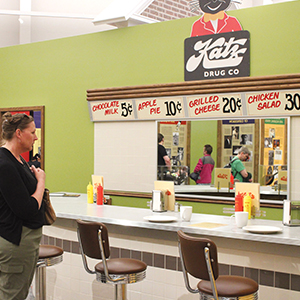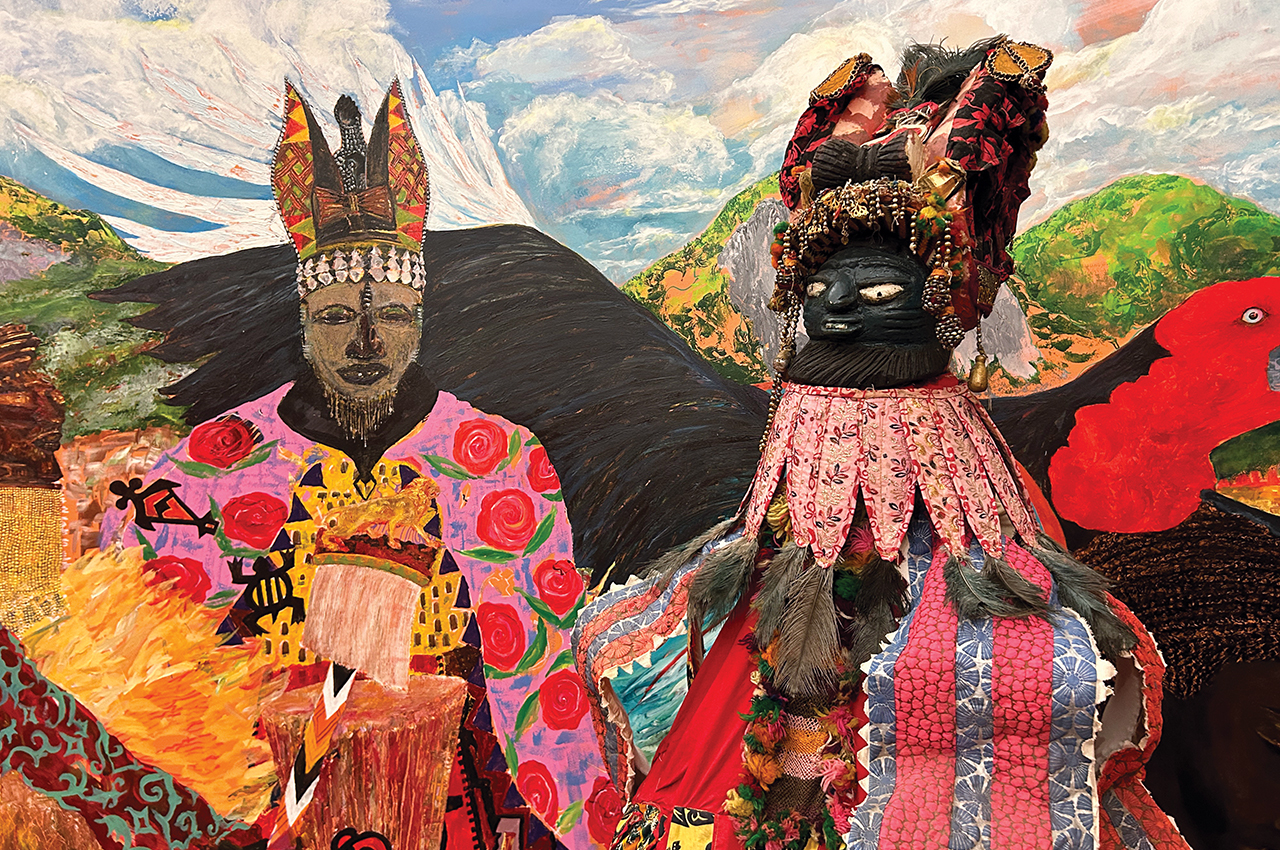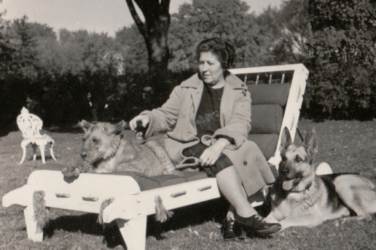Colorful folk art at the African American Museum of Iowa.
Writer: Mathany Ahmed
Thirty years ago, a small team of members from Cedar Rapids’ Mt. Zion Missionary Baptist Church had an idea: to collect the histories, artifacts and cultural assets from Iowa’s Black residents and share them with the community.
The museum’s mission to educate from the single room of a community center was ambitious, but with hard work and creativity, it worked. The museum gained support and moved to a storefront at Westdale Mall, then to its own building in 2003. After floods devastated much of Cedar Rapids in 2008, when the museum took in more than 5 feet of water, the organization rebuilt again.
So in 2019, when the city planned to install a flood wall at the museum’s entrance, executive director LaNisha Cassell saw yet another opportunity for growth: a revamped building that could take the museum into its next 30 years.
“The renovation was a means to increase awareness and visibility of the museum’s educational resources,” Cassell said. “There was a desire for the museum to continue being a beacon as a statewide resource and authority on Iowa’s African American heritage and culture.”
The African American Museum of Iowa reopened in spring 2024 after an 18-month closure and a nearly $5 million-dollar renovation.
Some changes, like the new entrance, parking lot and roof, are apparent as soon as you approach the building. A custom-made reception desk anchors the large modern lobby, a good place to host the community events Cassell is planning for the future.
“The museum remains a destination site and an economic driver,” she said. “The most significant change is the welcoming feeling the new look brings to our members, patrons and the community.”
Other aspects of the renovation — including updates to HVAC, plumbing and electrical systems — are less obvious but just as important, especially to preserve the museum’s collection of historic artifacts.
The permanent exhibition, “Endless Possibilities,” welcomes visitors with an acrylic painting by local artist Marcuso Irvin that highlights the vibrancy of African culture and the vastness of the continent’s history. From there, visitors move through a replica of a door at a Dutch slave port, where millions of Africans began the harrowing journey into the trans-Atlantic slave trade.
The immersive exhibit takes visitors through Black Iowa history, from an attic on the Underground Railroad to a replica of Katz Drug Store in downtown Des Moines, where Edna Griffin and other civil rights activists staged a successful protest in 1948. The exhibit culminates with the lectern Barack Obama used to announce his first presidential run, in 2008.

Take a seat at the lunch counter in a replica of Katz Drug Store, the site of a successful sit-in.
The museum’s recent renovation was made possible through its largest fundraising campaign to date, called Voices Inspiring Progress. The city of Cedar Rapids donated $1.07 million, in addition to building the new floodgate. Additional support came from various public and private donors, including the Alliant Energy Foundation, Iowa Economic Development Authority, Linn County and UnityPoint Health.
At press time, the campaign had raised more than $4.7 million toward its total goal, and Cassell hoped to raise the final $300,000 by the end of 2024.
“There were a lot of moving parts, but the leadership from every stakeholder was what made the process doable,” she said. “It resulted in a safety mechanism that protects our businesses and neighborhoods, and a beautiful building that showcases the museum’s significance in our community and across the state.”
With the new space, Cassell and her team are looking forward to ramping up the museum’s work, especially in a time when new Iowa laws restrict how race history can be taught in schools. The museum team plans to open an exhibit about images in pop culture that reinforced Jim Crow laws during the early and mid-20th century.
“Investing in the museum means you understand and appreciate the importance of preserving history and access to our full history,” Cassell said. “The acknowledgement of our country’s past might just be an essential part of healing and acceptance.”






